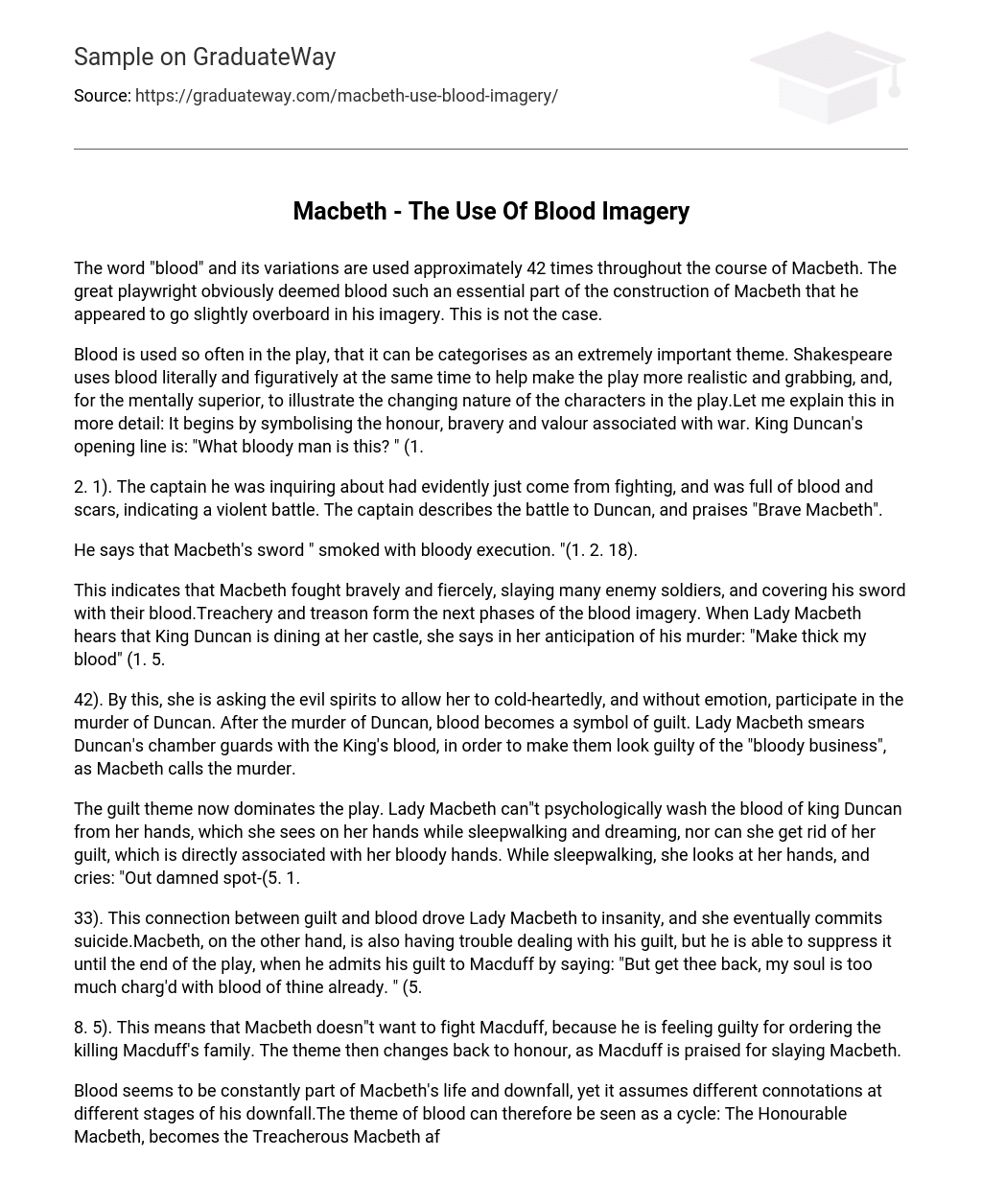Throughout the course of Macbeth, the word “blood” and its variations are utilized around 42 times. It is evident that the playwright considered blood to be a crucial element in the development of Macbeth, as depicted through an extensive use of imagery. However, this excessive utilization does not diminish its significance.
The recurring use of blood in the play qualifies it as a highly significant theme. Shakespeare cleverly employs both literal and figurative representations of blood to enhance the play’s realism and captivate the audience. Moreover, for discerning minds, it serves as a tool to portray the evolving traits of the characters. To delve deeper into this, blood initially symbolizes the qualities of honor, bravery, and valor linked with warfare. As exemplified by King Duncan’s opening line, “What bloody man is this?” (1.
2. 1). The captain, who was evidently just coming from fighting and covered in blood and scars, described a violent battle to Duncan. The captain praised “Brave Macbeth”.
According to him, Macbeth’s sword was filled with the “bloody execution” as it smoked (1. 2. 18).
Macbeth displayed great courage and strength in battle, killing numerous enemy soldiers and drenching his sword in their blood. The use of blood imagery continues as Lady Macbeth eagerly awaits the opportunity to commit regicide, urging for her blood to become thick in preparation for the act.
In her request, Lady Macbeth implores the malevolent spirits to grant her the ability to mercilessly and unfeelingly partake in the killing of Duncan. Following Duncan’s murder, blood becomes representative of guilt. To make the chamber guards appear culpable for the “bloody business,” Lady Macbeth smears them with the King’s blood, as Macbeth labels the assassination.
The dominant theme in the play now revolves around guilt. Lady Macbeth is unable to remove the psychological stain of King Duncan’s blood from her hands. She sees the blood on her hands while sleepwalking and dreaming, and her guilt is closely tied to these bloody hands. While sleepwalking, she glances at her hands and exclaims: “Out damned spot-(5. 1.”
Lady Macbeth was driven to insanity because of the connection between guilt and blood, leading her to eventually commit suicide. Macbeth, on the other hand, also struggles with guilt but manages to repress it until the play’s end. At that point, he confesses his guilt to Macduff by telling him: “But get thee back, my soul is too much charg’d with blood of thine already.” (5.
8. 5). Macbeth is reluctant to fight Macduff due to his guilt over ordering the killing of Macduff’s family. However, the theme reverts to honor as Macduff is applauded for slaying Macbeth.
Throughout Macbeth’s downfall, blood plays a constant role, albeit with varying connotations. It forms a cycle, symbolizing the transformation of Macbeth from an honourable character to a treacherous one after killing Duncan, and then to a guilty one before ultimately being killed by Macduff, restoring the cycle. Blood symbolism is intricately woven into the play’s structure and significantly contributes to its dominant imagery. The numerous references to blood enhance the realism of Macbeth, making it an exceptionally powerful theme.





